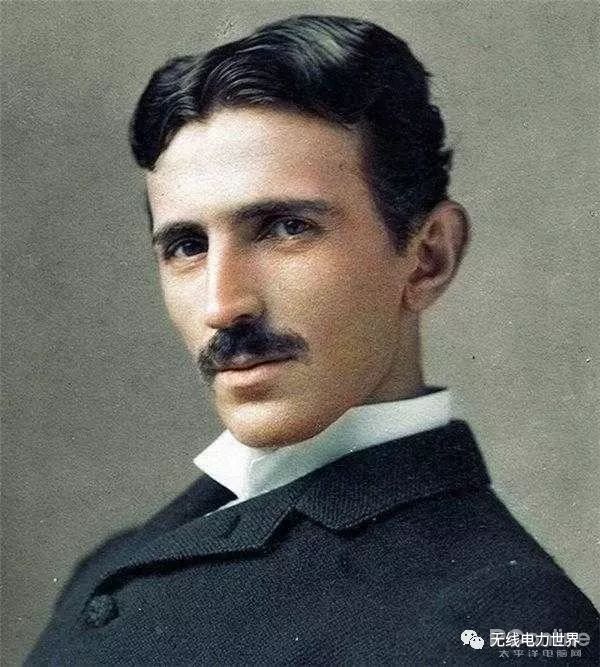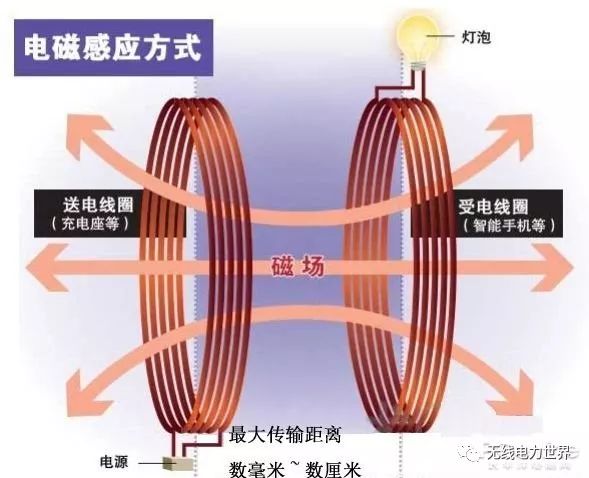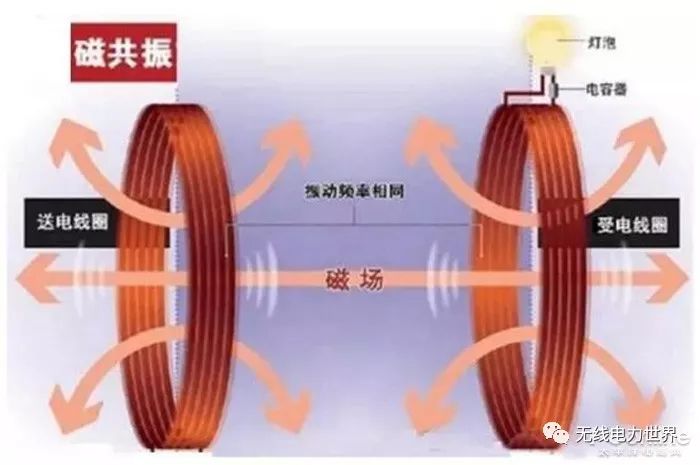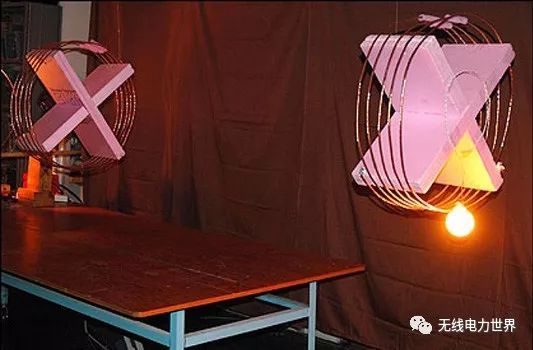Wireless charging has been hot recently, and mobile phones are also using wireless charging technology on a large scale, but we are still far away from the real wireless power supply (although the equipment of wireless power supply and wireless charging is similar, but the concept is still very different), But the recent wireless power supply is the first to be applied to the mouse. Why can wireless powered mice be used first? How far are we from the true wireless power supply?
Recently, we have collected three wireless charging / powered mouse peripherals currently on the market, and are ready to do a horizontal review, but the horizontal review between the three products takes a little longer. Here, let me give you a preview. By the way, let's talk about wireless charging / power supply and the difference between wireless charging and wireless power supply.
Everything comes from wireless transmission technology
In fact, whether it is wireless charging or wireless power supply, it is actually derived from wireless power transmission technology.

When it comes to wireless power transmission, we generally think that it was originally invented by Nikola Tesla in the late 19th century. Tesla originally worked under Edison's hands, and then broke up because of disagreement. The reason for the breakup is that Tesla believes that AC power It is the future, and Edison believes that the future belongs to direct current, and has been torn for a long time. Of course, we already know the final result by now.
The reason why AC power can win is that the AC power can be easily transformed. We know that long-distance transmission of electrical energy requires ultra-high voltage to ensure that the electrical energy is minimized during transmission. If you want to transform DC power, you need to go through: the first step is to convert to AC power, the second step is to transform voltage, and the third step is to convert to DC power, and doing so will result in increased power loss, increased equipment costs, and increased processing. Difficulty. Therefore, alternating current has become the power transmission method we are currently using.

The wireless transmission of electrical energy is precisely because of the discovery and application of alternating current. A changing electric field can produce a changing magnetic field and can excite a long-distance coil to produce a changing electric field (one of the working principles of a transformer). So many people at that time studied how to Increase the distance, but unfortunately has not been successful.
Four ways of wireless power transmission
Based on the electromagnetic induction technology, the wireless charging / wireless power supply devices we are using are all generated according to the principle of electromagnetic induction. At least the devices that we have already commercialized are all electromagnetic induction principle devices. There are currently four ways to achieve wireless power transmission: electromagnetic induction, electromagnetic resonance, electromagnetic coupling, and microwave resonance.

Most of the various wireless charging technologies we see today use electromagnetic induction technology. We can think of this technology as a separate transformer. We removed the central magnet (iron core). Put the coil at the transmitter and the coil at the receiver in two separate devices. When electrical energy is input to the coil at the transmitter, a magnetic field is generated. When the magnetic field induces the coil at the receiver, a current is generated. A set of wireless power transmission system.
Because we removed the middle magnet, the magnetic field weakens rapidly with the increase of distance, and the distance that electrical energy can transmit is very short, generally only in the range of a few millimeters to a few centimeters. Effect, so it can only be applied to small wireless charging devices with lower power.

Compared with the electromagnetic induction method, the electromagnetic resonance is much farther away. The electromagnetic resonance uses two coils with completely matching specifications. One coil generates a magnetic field when energized, and the other coil resonates and the generated current can light up. Light bulbs or power to equipment.

At present, it can reach a transmission range of several meters, but because it is a divergent transmission method, the overall efficiency is not high, but the advantage is that it can transmit power to multiple devices at the same time and have a certain degree of freedom in the horizontal position.
The electromagnetic coupling and microwave resonance methods are generally not optimistic. The electromagnetic coupling distance is limited, and the principle is similar to magnetic resonance, but there are not many supporters. The transmission power of microwave resonance is too small at present, and the principle is similar to that of WiFi signal transmission (in fact, the transmission of wireless signals such as WiFi signals can also be regarded as a method of energy transmission, only because the energy is emitted in all directions, and the utilization rate is extremely weak).
The difference between wireless charging and wireless power supply
Okay, before we finish understanding the basic situation of wireless power transmission, and then return to our question, what is the difference between wireless charging and wireless power supply?

Both are essentially derived from wireless power transmission. We all know that power transmission refers to the technology of transmitting electrical energy from the power generation device to the receiving end without passing through the cable. Because many people currently mix wireless power transmission, wireless charging, and wireless power supply, although the boundaries between the three are not too clear, there are still subtle differences.
From the perspective of our consumers, we can understand it as simple as:
Wireless transmission focuses on the transmission of words, focusing on the transmission of electricity. This is a process and a technology, and wireless power supply and wireless charging are two different ways of applying wireless transmission technology.
Wireless charging is more about charging the energy storage and charging equipment in the device. The key lies in a charging. The object must carry the energy storage device or in general, the battery. However, the current wireless charging has more meaning and application scenarios. At a relatively fixed position, it is used to charge small battery-equipped devices.
Wireless power supply is the wireless power transmission equipment that distributes the power transmission to the electrical appliances. The electrical appliances do not necessarily need to store the power inside. More emphasis is placed on that it can be used immediately (of course, it can also charge the battery), and it is free for long distances. Adjust the position of the electrical equipment to supply power. The significance of wireless power supply is more to provide electricity to household appliances that consume more power. To meet the requirements of true wireless power, it can be said that wireless power supply is more difficult than wireless charging, and it is more meaningful.
Many people like to mix the three together and call it wireless charging. Indeed, in the current environment, we are more exposed to wireless charging. But with the development of technology in the future, we still need to distinguish these in their respective application scenarios.
Why wireless power supply was first used on the mouse
The current first wirelessly powered mouse (note the power supply) should be Razer ’s Mamba Cobra Ultra. The Logitech G903 PowerPlay combination and the Corsair DARK CORE wireless charging mouse set are mainly charged to the internal battery, called the wireless charging mouse, the mouse battery is charged first, and then the mouse will use the internal power of the battery, and The power provided by the wireless charging mouse pad will not be used directly.
The wireless power supply is the first to be used on the mouse is actually very cute. First of all, because the power consumption of the mouse is small and does not require high-power wireless power transmission, the current wireless power transmission technology can meet the power consumption requirements of the mouse. The second is because the mouse pad is a must-have item. The mouse pad is used as a necessary item for the mouse to be placed on the desktop without adding extra space. Third, the power supply distance is short. The mouse is in close contact with the mouse pad during use. At most, the number of seconds you raise your hand is a few centimeters. This distance can meet the needs of the current mature electromagnetic induction.
And small power devices do not have to face the heat dissipation problem. We currently see heat dissipation holes in many wireless charging devices, and even some wireless charging devices also have air-cooled heat dissipation inside. It won't appear at all.
PConline summary
In the future, in the terminal equipment, wireless power supply will have a larger stage, not all load appliances will be equipped with batteries, and it is not practical. High-power charging such as electric car charging is still using the wired charging method, wireless The use environment of power supply will be much broader than that of wireless charging. Of course, the technical difficulty is also very high, but I believe that the future is expected.
Yellow Led Display,0.36 Inch Yellow Led Display,3 Digits Green Led Display,3 Digits Led Segment Display
Wuxi Ark Technology Electronic Co.,Ltd. , https://www.arkledcn.com